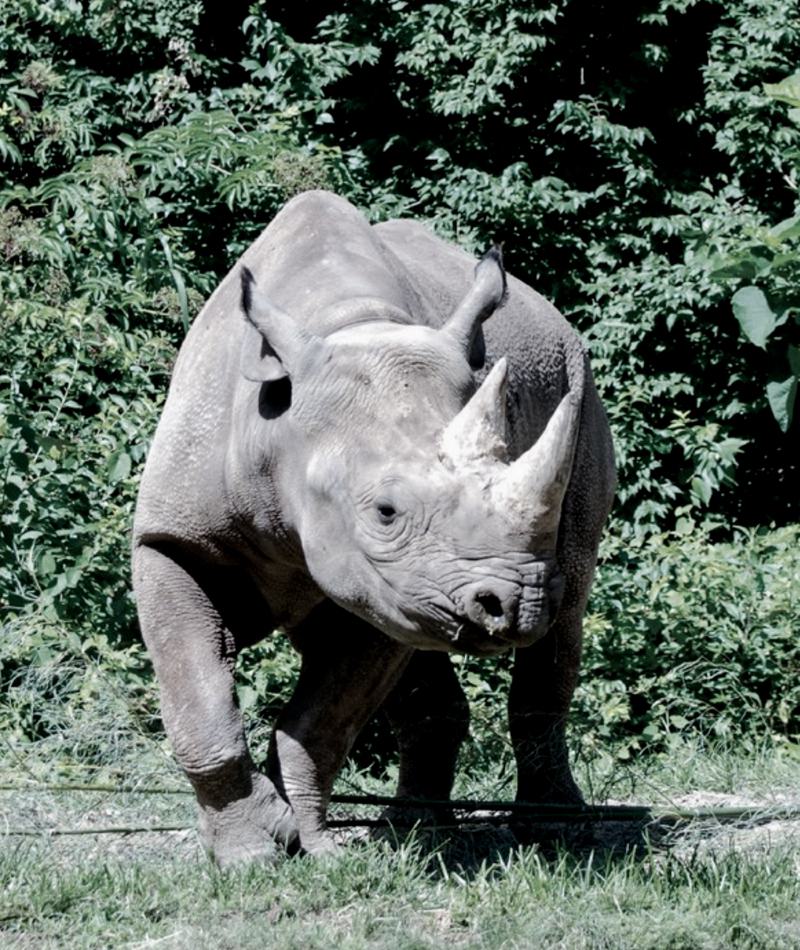
Black Rhinoceros
Diceros bicornis
Did you know?
- Black rhinoceros are part of the Rhinocerotidae family, which they share with other rhinos.
- There are five species of rhino in the world: two in Africa and three in Asia.
- Rhino horns are made of keratin, or densely compressed hair, the same material as our fingernails!
- An adult can weigh more than one ton (2,000 pounds).
- A female will have one calf.
Adaptations
Black rhinoceroses are imposing animals, with an adult weighing in at more than 1 ton. Their horns are large as well: the front (anterior) horn is larger and measures up to 55 inches, while the rear (posterior) horn is smaller and measures up to 22 inches. Although they have poor eyesight, they have keen senses of smell and hearing, which help them communicate and observe their surroundings.
Young and Family
Black rhinoceros are semi-social and territorial animals; adult females have overlapping ranges while males are generally solitary. Black rhino ranges vary greatly depending on the habitat and, to some extent, on sex and age. Females will have a gestation period between 14 and 16 months, and then give birth to one calf.
Threat Level
- Unknown
- Common
- Near Threatened
- Threatened
- Endangered
- Critically Endangered
- Extinct in the Wild
Critically Endangered
The Black Rhinoceros faces as extremely high risk of extinction in the wild.
Range
Eastern and Southern Africa from Kenya to the Cape
Habitat
Grasslands, savannahs and tropical bushlands

We care about black rhinos
The black rhinoceros has been pushed to the brink of extinction by illegal poaching for their horns, and to a lesser extent by loss of habitat.
We are working to help protect rhinos through the Saint Louis Zoo WildCare Institute Center for Conservation in the Horn of Africa. The Saint Louis Zoo also participates in the Black Rhino Species Survival Plan, a cooperative breeding program that helps ensure a healthy population of animals. Learn more about how we are helping rhinos in the wild.
Find this animal in River's Edge

SAINT LOUIS ZOO ZONE
River's Edge
Take a journey along a mythical waterway through four continents to discover how wildlife, plants and people interact. River's Edge is the Saint Louis Zoo's first immersion exhibit—a lushly planted naturalistic environment showcasing multiple species from around the world.

